Mass production of Trichogramma spp.
Mass production of Trichogramma spp.
Mass production of Corcyra cephalonica (Laboratory host for Trichogramma spp.)
Materials required
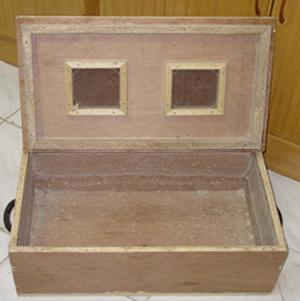
- Sterilized sorghum
- Corcyra rearing boxes/trays/jars made up of plastic or wood with lid provided with wire mesh for aeration
- Corcyra egg laying cage
- Black cloth
- Mosquito net
- Table
- Racks for placing Corcyra cages
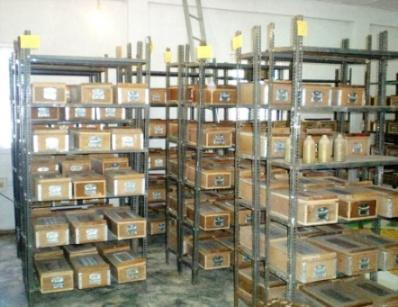
- Honey
- Glycerin
- Tubes for collecting Corcyra moth
- Measuring cylinder
- Plastic tubs for egg laying purpose
- Brush
- Roasted ground nut powder - 100 grams
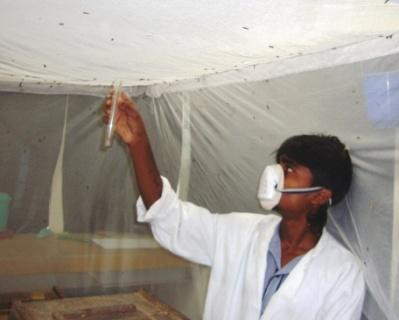
- Yeast - 5 grams
- Wettable sulphur - 5 grams
- Streptomycin sulphate - 0.05 gms
Preparation of egg laying cage of Corcyra cepholonica
Take a plastic bucket with lid. Cut the lid in circular shape leaving space for providing /fixing wire mesh for egg laying purpose in the (circular wire mesh). Make a hole on the centre of bottom of the plastic bucket to pour the collected adults in the bucket. Keep bucket inverted in the plastic tub for egg laying purposes.
Steps for production of Corcyra cephalonica
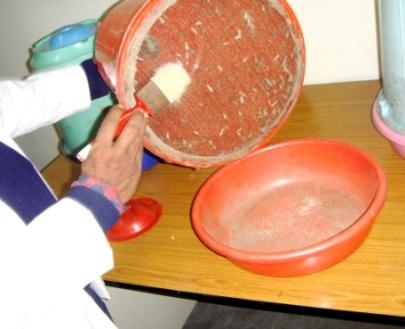
- Sterilize the rearing boxes (if wooden) in hot air oven for 100 degree centigrade for 30 minutes
- If plastic trays are used, wash them before use
- Dry broken grains of jowar in sunlight properly
- Pour sterilized grain - 2.5 kg/box/tray
- Add 100 grams of roasted ground nut powder, 5 grams of yeast, 5 grams of wettable sulphur, 0.05 gms of streptomycin sulphate in each box or tray
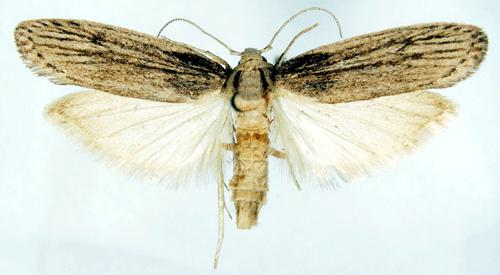
- Mix well all ingredients
- Sprinkle 1 cubic centimeter of Corcyra eggs/box/tray on the top of mixture(culture medium)
- Cover the box with lid, label the date of inoculation
- Keep these boxes in racks protected by ant pans
- Favourable temperature for rearing is 28+/-2 degree centigrade and Relative humidity, 75% +/- 5%
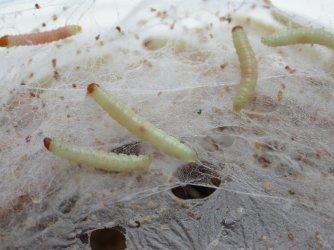
- The moth starts emerging on 40th day
- Bring the boxes ready for moth emergence and collect moths inside the net by glass tubes
- Transfer the moths to egg laying chamber
- Provide cotton soaked 20% honey+ vitamin E solution as adult food in the egg laying chamber
- Collect the eggs daily
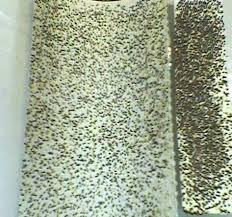
- Pour the eggs in a paper by tilting slightly downward so eggs come down side where as dust particles remain in upper side
- Clean the eggs further by passing through different size sieves to 10, 15 and 40 meshes
- Discard the moth after 4 days
- Utilize the Corcyra eggs for Trichogramma production (or) host culture or store them in refrigerator at 10 degree centigrade for 7 days, if required.
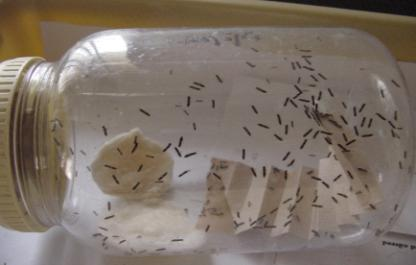
Mass production of Trichogramma
Materials required

- Corcyra eggs
- Nucleus culture of Trichogramma
- Polythene bags
- Rubber bands
- Scissors
- Gum
- Brush
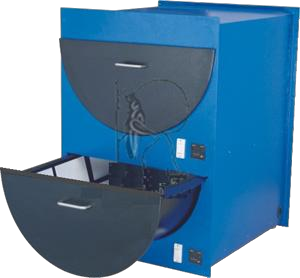
- Tea strainer
- Tricho cards
- 50% honey solution
- Stapler
- Refrigerator
- UV lamp
Methodology
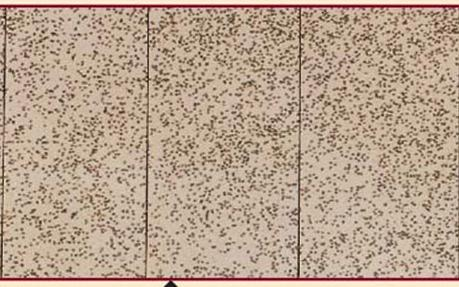
Clean fresh Corcyra eggs by passing through 15, 30 and 45 mesh sieves. Prepare “Trichocard” by cutting card board sheet to the size of 10 x10 cm which can accommodate 1 cc of eggs. Apply gum on the card and sprinkle the cleaned eggs uniformly. Remove the excess eggs from the cards by using brush. Allow the card for shade drying for 30 minutes. Treat the eggs under UV lamp for 30 minutes. Take polythene bag, insert UV treated “Trichocard” and nucleus card at the ratio of 6:1 (6 Corcyra egg cards: 1 Trichogramma nucleus card) and provide 50% honey vitamin E in a soaked cotton swab. 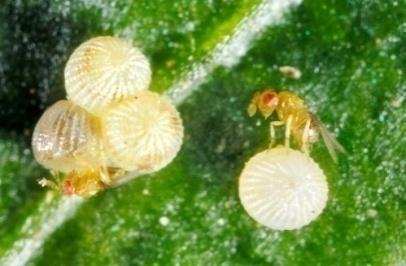 Remove the Tricho cards after 2 days Corcyra eggs changes black colour on 3rd day indicates the parasitization of eggs. Release the parasitized egg cards immediately in the fields (or) store them in refrigerator at 10 degree centigrade up to 21 days. Place/tie/staple parasitized cards on leaf sheath of plant.
Remove the Tricho cards after 2 days Corcyra eggs changes black colour on 3rd day indicates the parasitization of eggs. Release the parasitized egg cards immediately in the fields (or) store them in refrigerator at 10 degree centigrade up to 21 days. Place/tie/staple parasitized cards on leaf sheath of plant.
Source: Skill Development of Farmers for Production of IPM inputs in IPM Seva Kendra
সর্বশেষ সংশোধন করা : 2/17/2021
